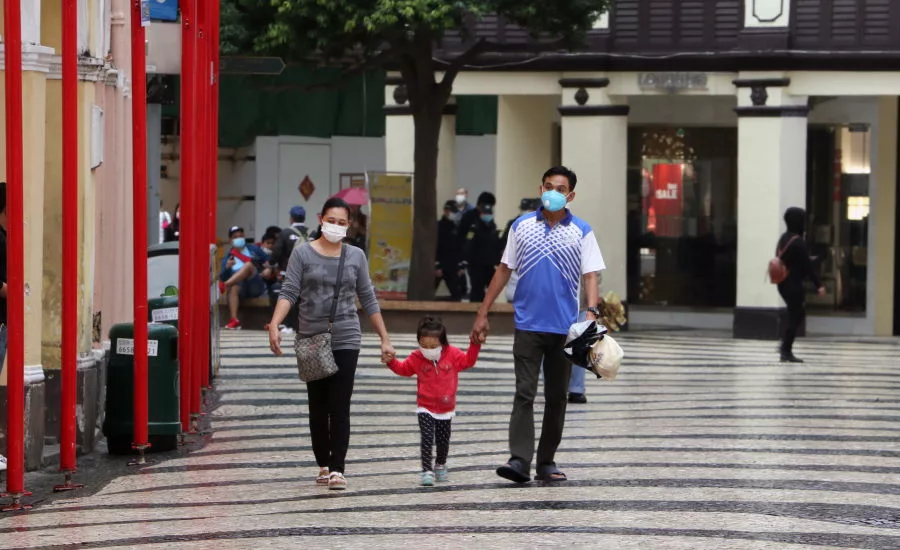Implications of the Families First Coronavirus Response Act for Roofing Contractors

By Benjamin Lowenthal
Late on March 18, 2020, after being passed earlier in the day by the U.S. Senate, President Donald Trump signed into law the Families First Coronavirus Response Act (the “Families First Act”). The legislation is the second in what’s expected to be a series of bills designed to address the COVID-19 coronavirus pandemic. It contains a number of employment related provisions that will have a direct impact on the roofing industry and construction contractors with fewer than 500 employees.

This article focuses on what roofing contractors need to know about the version of the Families First Act signed into law. Further guidance and implementing regulations are expected from the Department of Labor as well as from other federal agencies.
What Provisions Impact Employers?
The Families First Act contains two primary provisions that impact employers. The first provision is the Emergency Paid Sick Leave Act (EPSLA), which requires certain employers to provide paid sick leave to employees who are unable to work because of COVID-19. The second provision is the Emergency Family and Medical Leave Expansion Act (EFMLA), which expands the Family and Medical Leave Act (FMLA) and also requires certain employers to provide leave, as well as pay, to eligible employees.
Emergency Paid Sick Leave Act (EPSLA)
Which Employers are Subject to Paid Sick Leave?
If you employ fewer than 500 employees, you are subject to the law. Private employers with fewer than 500 employees will be required to give paid leave to eligible employees.
Which Employees are Eligible?
If you have fewer than 500 employees, all of your employees are eligible for paid sick leave, regardless of how long the employee has been employed by your company. Employees will be eligible to take paid sick leave if they are unable to work (or telework) and need to take sick leave because of one of the following six reasons:
- The employee is subject to a federal, state, or local quarantine or isolation order related to COVID-19
- The employee has been advised by a health care provider to self-quarantine due to concerns related to COVID-19
- The employee is experiencing symptoms of COVID-19 and is seeking medical diagnosis
- The employee is caring for an individual who is subject to a federal, state, or local quarantine or isolation order related to COVID-19 or has been advised by a health care provider to self-quarantine due to concerns related to COVID-19
- The employee is caring for a son or daughter under the age of 18 whose school has been closed, or the child care provider of such son or daughter is unavailable, due to COVID-19 precautions, or
- The employee is experiencing any other substantially similar condition specified by the Secretary of Health and Human Services in consultation with the Secretary of the Treasury and the Secretary of Labor.
The amount of compensation an employer is required to pay an eligible employee will depend on which of the above reasons the employee takes sick leave.
How Much Must Employers Pay?
Employers must compensate eligible employees who take sick leave to care for themselves (reasons 1-3) at the higher of: (1) the employee’s regular rate of pay; (2) the federal minimum wage; or (3) the local minimum wage.
Employers must compensate eligible employees who take sick leave to care for others (reasons 4-6) at two-thirds of the employee’s regular rate of pay.
Importantly, there is a cap, or limit, on the amount of wages employers will be required to pay employees for sick leave under EPSLA.
What’s the Compensation Cap?
The compensation cap depends on the reason for the need to take paid sick leave. If the employee is taking paid sick leave under reasons 1-3, EPSLA caps the amount of compensation at $511 per day (with an aggregate limit of $5,110). If the employee is taking paid sick leave under reasons 4-6, EPSLA caps the amount of compensation at $200 per day (with an aggregate limit of $2,000).
How Much Sick Leave Can an Eligible Employee Take?
Full-time employees are entitled to 80 hours of paid sick leave and part-time employees are entitled to the average number of hours the part-time employee worked on average, over a two-week period.
If an employee’s schedule varies from week to week to such an extent that an employer is unable to determine with certainty the number of hours the employee would have worked if the employee had not taken paid sick leave, the number of hours of paid sick leave should be calculated as the average number of hours that the employee was scheduled per day over the six-month period prior to the date on which the employee takes the paid sick leave, including the hours the employee took leave of any type.
If the employee did not work over the six-month period, the number of hours of paid sick leave should be calculated as the reasonable expectation of the employee at the time of hiring of the average number of hours per day that the employee would normally be scheduled to work.
To assist employers in calculating the number of hours of paid sick leave for employees, EPSLA instructs the Department of Labor to issue calculation guidelines “not later than 15 days after the date of the enactment.” The president signed the legislation the evening of March 18, which means that the Department of Labor should issue the calculation guidelines by April 2.
Is the Employer Required to Give Notice?
Yes. The Secretary of Labor will be making available an approved notice form that must be posted by the employer where notices to employees are customarily kept. When the notice becomes available, we will send out a link via our e-mail blast.
When Do Paid Sick Leave Requirements Begin?
EPSLA states that the paid sick leave requirements “shall take effect not later than 15 days after the date of enactment.” The president signed the legislation the evening of March 18, which means that EPSLA requirements become effective April 2.
When Do They End?
EPSLA contains a sunset provision that terminates the paid sick leave requirements of EPSLA on Dec. 31, 2020.
What About Existing Sick-Leave Policies?
Paid sick leave under EPSLA is in addition to the employer’s existing sick leave policies. EPSLA states that “[a]n employer may not require an employee to use other paid leave provided by the employer to the employee before the employee uses the paid sick time under [EPSLA].”
Will Employers Be Penalized for Non-Compliance?
Yes. EPSLA prohibits employers from discriminating or disciplining against, or discharging, an eligible employee who takes paid sick leave or files a compliant or institutes an action related to EPSLA. Employers who do not give an eligible employee paid sick leave or willfully discriminate, discharge, or discipline an eligible employee could be subject to a fine up to $10,000, and/or imprisonment up to six months.
Emergency Family and Medical Leave Expansion Act (EFMLA)
Which Employers Are Subject to Leave Under EFMLA?
If you employ fewer than 500 employees, you are subject to the law. Private employers with fewer than 500 employees will be required to give paid leave to eligible employees. Please note that EFMLA now drastically changes employer coverage obligations for employers not traditionally subject to FMLA requirements (those employers with 50 or less employees).
In addition, EFMLA states that the Secretary of Labor shall have the authority to issue regulations for “good cause” under EFMLA, including “to exempt small businesses with fewer than 50 employees from the requirements of [EFMLA] when the imposition of such requirements would jeopardize the viability of the business as a going concern.” However, as of this writing, the Department of Labor has not issued any regulations exempting employers with 50 or less employees from EFMLA obligations.
Which Employees Are Eligible for Leave Under EFMLA?
Employees are eligible for leave if the employee has been employed for at least 30 calendar days. Please note that this eligibility requirement varies considerably from the 12-month employment and 1,250 hours requirement usually applicable to FMLA leave eligibility.
In addition, the employee must elect leave due to a “qualifying need related to a public health emergency.” EFMLA states that this means “the employee is unable to work (or telework) due to a need for leave to care for a son or daughter under 18 years of age of such employee if the school or place of care has been closed, or the child care provider of such son or daughter is unavailable, due to a public health emergency.” EFMLA goes on to state that the term “public health emergency” means “an emergency with respect to COVID-19 declared by a Federal, State, or local authority.”
How Much Leave is an Eligible Employee Entitled to Under EFMLA?
Eligible employees will be entitled to 12 weeks of job-protected leave. EFMLA does not expand the standard 12-week per 12-month standard leave requirement under the FMLA.
How Much Compensation Must Employers Pay Under EFMLA?
Importantly, the first 10 days of leave under EFMLA are unpaid. During this first 10-day period, an employee may choose to substitute any accrued paid leave (such as vacation or sick leave) to cover some or all of the 10-day period. However, an employer must pay an eligible full-time employee for each day of leave after the initial 10 days “in an amount not less than two-thirds of an employee’s regular rate of pay.”
As with EPSLA, EFMLA has instructions for how employers should calculate the number of hours an employee with varying schedules should be paid for leave under EFMLA. For an employee with a schedule that varies from week to week, the employee is entitled to be paid based on the average number of hours the employee was scheduled per day over the six-month period prior to the date on which the employee takes the leave, including hours for which the employee took leave of any type.
If the employee did not work over the six-month period, the number of hours of paid sick leave should be calculated as the reasonable expectation of the employee at the time of hiring of the average number of hours per day that the employee would normally be scheduled to work.
Employees who have worked for less than six months prior to the date of leave are entitled to be paid based on the employee’s reasonable expectation at hiring of the average number of hours the employee would normally be scheduled to work.
There is also a cap at $200 per day (and $10,000 in the aggregate) for paid leave under EFMLA, regardless of whether the leave is taken by a full-time or part-time employee.
Is the Employer Required to Give Notice to Employees Under EFMLA?
Yes, if the necessity for leave is foreseeable. In that case, employers should provide notice to employees, as is practical, in the same manner as other FMLA leave notices. The current FMLA leave notice poster can be found here: www.dol.gov/agencies/whd/posters/fmla.
Is the Employer Required to Restore the Employee’s Position After Leave?
Yes. An employee is entitled to the same reinstatement rights as if the employee had taken normal FMLA leave. However, employers with fewer than 25 employees are exempt from the reinstatement requirement if: (1) the position held by the employee taking leave does not exist due to economic conditions or other changes in operating conditions of the employer, (2) the employer makes a reasonable effort to reinstate the employee to an equivalent position with similar pay and conditions of employment, and (3) the employer makes a reasonable effort to contact the employee about an equivalent position if such position becomes available within one year after the employee attempts to return to work.
When Do EFMLA Requirements Begin?
EFMLA requirements take effect not later than 15 days after the date of enactment. The president signed the legislation the evening of March 18, which means that EFMLA requirements become effective April 2.
When do the EFMLA Requirements End?
EFMLA contains a sunset provision that terminates EFMLA requirements on Dec. 31, 2020.
Tax Credits for Paid Sick Leave
Will Employers Be Able to Recover Any Sick Leave Paid to Eligible Employees Under EPSLA and EFMLA?
Yes, in the form of refundable tax credits. Employers are entitled to a refundable payroll tax credit on the wages required to be paid to eligible employees under both EPSLA and EFMLA. The tax credit will be allowed against the employer portion of Social Security taxes. If the tax credit exceeds the taxes the employer owes, the employer will be reimbursed the remaining balance of the tax credit.
For EPSLA, if the employee is taking paid sick leave under reasons 1-3, the credit limit is $511 per day (with an aggregate limit of $5,110) and if the employee is taking paid sick leave under reasons 4-6, the credit limit is $200 per day (with an aggregate limit of $2,000). This tax credit may be claimed for no more than 10 calendar days of pay per employee.
For EFMLA, the credit limit is $200 per employee per day (with an aggregate limit up to $10,000 per employee).
Benjamin S. Lowenthal is an associate with Atlanta-based law firm Hendrick, Phillips, Salzman & Siegel and is a licensed lawyer in the states of Georgia and New York. Ben’s practice includes labor & employment matters within the construction industry. Reach him at 404-522-1410, bsl@hpsslaw.com or visit www.Hpsslaw.com.
Looking for a reprint of this article?
From high-res PDFs to custom plaques, order your copy today!







